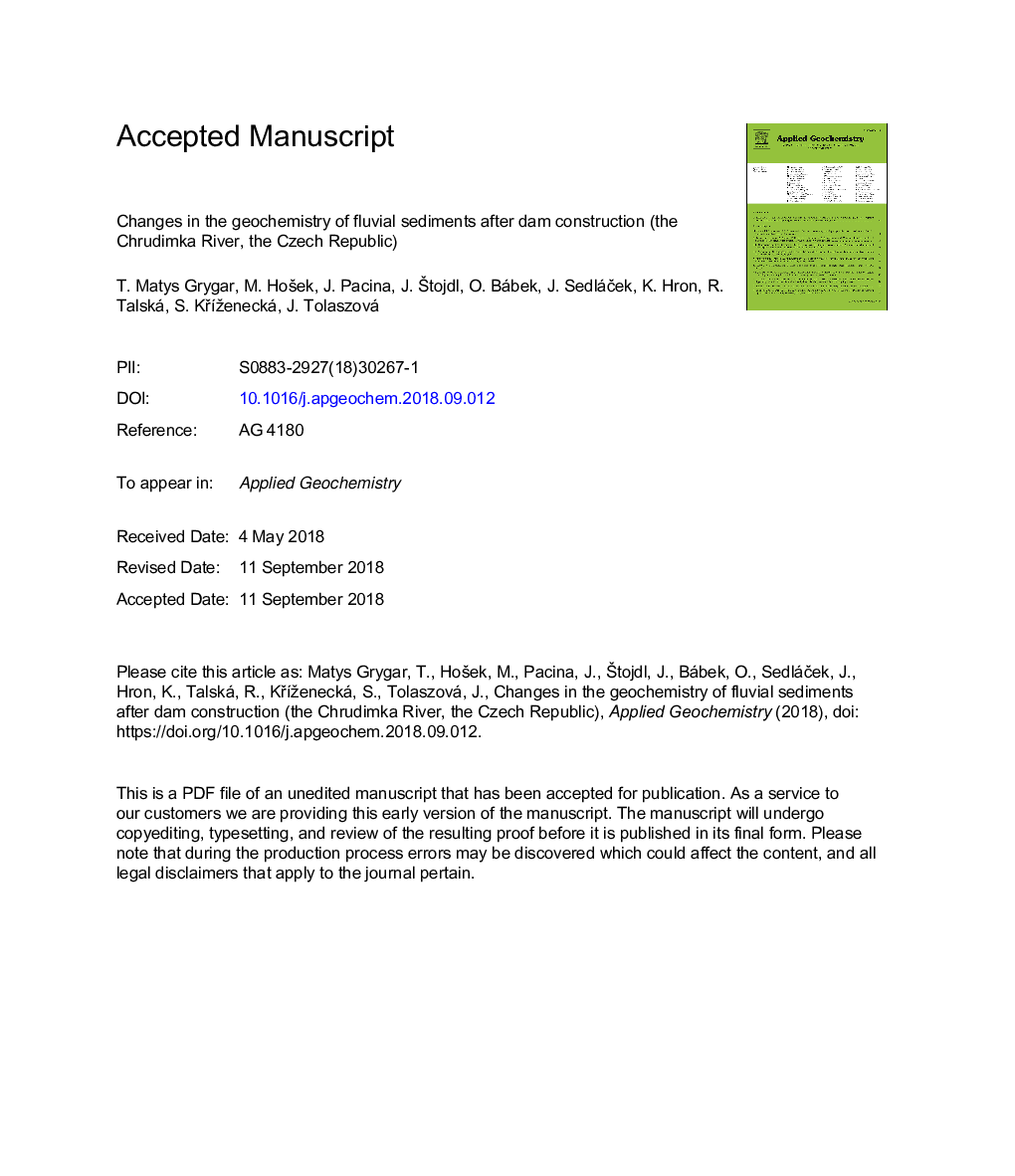| کد مقاله | کد نشریه | سال انتشار | مقاله انگلیسی | نسخه تمام متن |
|---|---|---|---|---|
| 10223574 | 1701032 | 2018 | 39 صفحه PDF | دانلود رایگان |
عنوان انگلیسی مقاله ISI
Changes in the geochemistry of fluvial sediments after dam construction (the Chrudimka River, the Czech Republic)
ترجمه فارسی عنوان
تغییرات ژئوشیمی رسوبات رشته ای بعد از ساخت سد (رودخانه کرودیمکا، جمهوری چک)
دانلود مقاله + سفارش ترجمه
دانلود مقاله ISI انگلیسی
رایگان برای ایرانیان
کلمات کلیدی
موضوعات مرتبط
مهندسی و علوم پایه
علوم زمین و سیارات
ژئوشیمی و پترولوژی
چکیده انگلیسی
The SeÄ Dam Reservoir on the Chrudimka River (the Czech Republic) was studied as a possible barrier for the transport of solid particles related to fluvial pollution. To understand the damming-triggered changes in the sediment lithology and geochemistry and to establish the pollution chemostratigraphy of the reservoir deposits, we first characterized the grain-size control on the sediment composition, including concentrations of risk elements Cu, Ni, Pb, and Zn. To that end, we first examined the chemical composition of the sieved size fractions of sediments, and then we compared the grain-size parameters obtained by granulometry with the geochemical composition using either scatter plots or a compositional regression with functional covariates in framework of Bayes spaces. The onset of deposition in the dam reservoir outside of the inflow delta is marked by three major changes: (1) a decrease in the grain size and a corresponding increase in Al/Si and Ti and a decrease in K and Ca, (2) enhanced retention of the finest particulates, especially Fe and Mn, and (3) enhanced concentration of risk elements originating from local industry in the city of Hlinsko that started nearly coevally with the dam construction. In the inflow delta, these changes are not so straightforward: the lithology of the deltaic deposits resembles that of the pre-dam fluvial sediments, except for the fact they are polluted, although the pollution stratigraphy is poorly preserved. The peak of polycyclic aromatic hydrocarbons (PAHs) in the dam reservoir was found near the onset of the dam deposition. We found that Fe is the best-performing reference (normalizing) element for the geochemical background functions (GBFs), although Ti would provide better grain-size correction; clearly, post-depositional geochemical reactions also play a role. GBFs were used to calculate local enrichment factors (LEF) and show that the dam construction suppressed the downstream transport of Cu, Ni, and Zn pollution by more efficient retention and trapping of fine sediment components including Fe oxides, which are otherwise transported through the floodplain.
ناشر
Database: Elsevier - ScienceDirect (ساینس دایرکت)
Journal: Applied Geochemistry - Volume 98, November 2018, Pages 94-108
Journal: Applied Geochemistry - Volume 98, November 2018, Pages 94-108
نویسندگان
T. Matys Grygar, M. HoÅ¡ek, J. Pacina, J. Å tojdl, O. Bábek, J. SedláÄek, K. Hron, R. Talská, S. KÅÞenecká, J. Tolaszová,
